Here are the safe temperatures for lithium-ion batteries:
Safe storage temperatures range from 32℉ (0℃) to 104℉ (40℃).
Meanwhile, safe charging temperatures are similar but slightly different, ranging from 32℉ (0℃) to 113℉ (45℃).
While those are safe ambient air temperatures, the internal temperature of a lithium-ion battery is safe at ranges from -4℉ (-20℃) to 140℉ (60℃).
So if you want to learn all about the safe ranges of temperatures for lithium-ion batteries, then this article is for you.
Let’s get right into it!
- What is a Lithium Battery? Your Ultimate Guide to Charging and Usage
- Charging Dead Kindle: How Long?
- Playing While Charging Phone: Damages Battery?
- Constant Charging Laptop: Damages Battery?
- Frequently Charging Laptop: Damages Battery?
- Frequently Charging Phone: Damages Phone Battery?
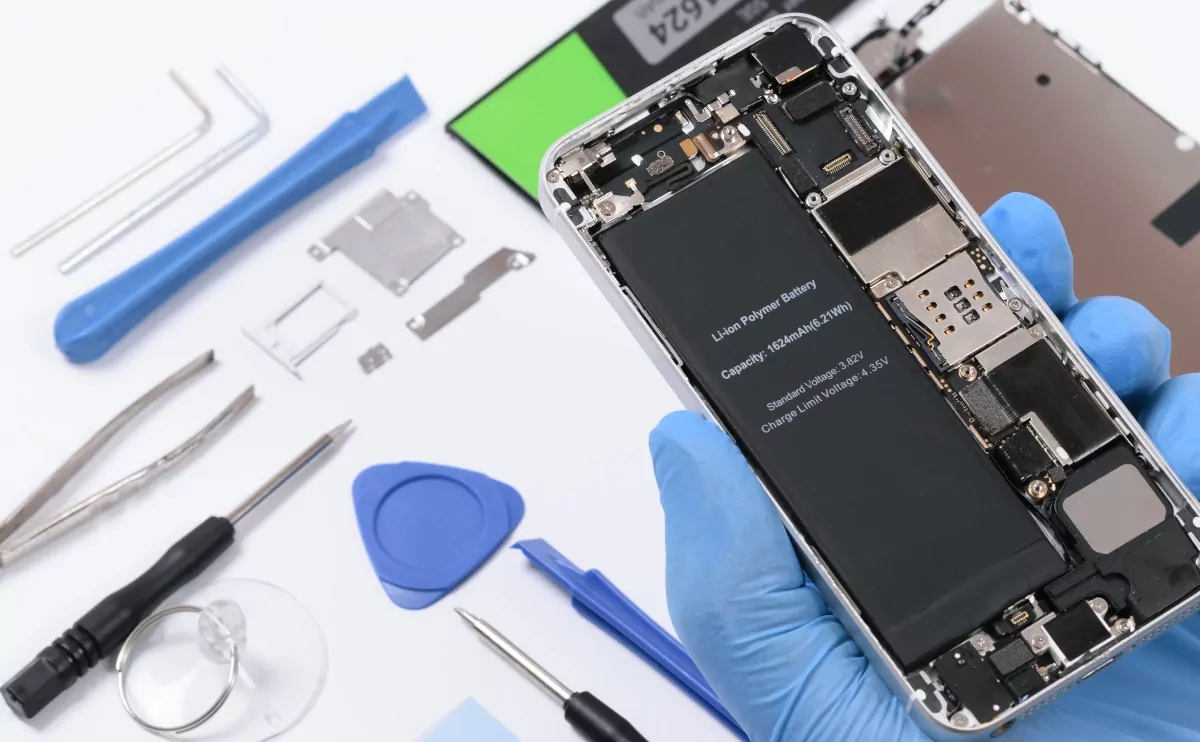
What Are Lithium-Ion Batteries?
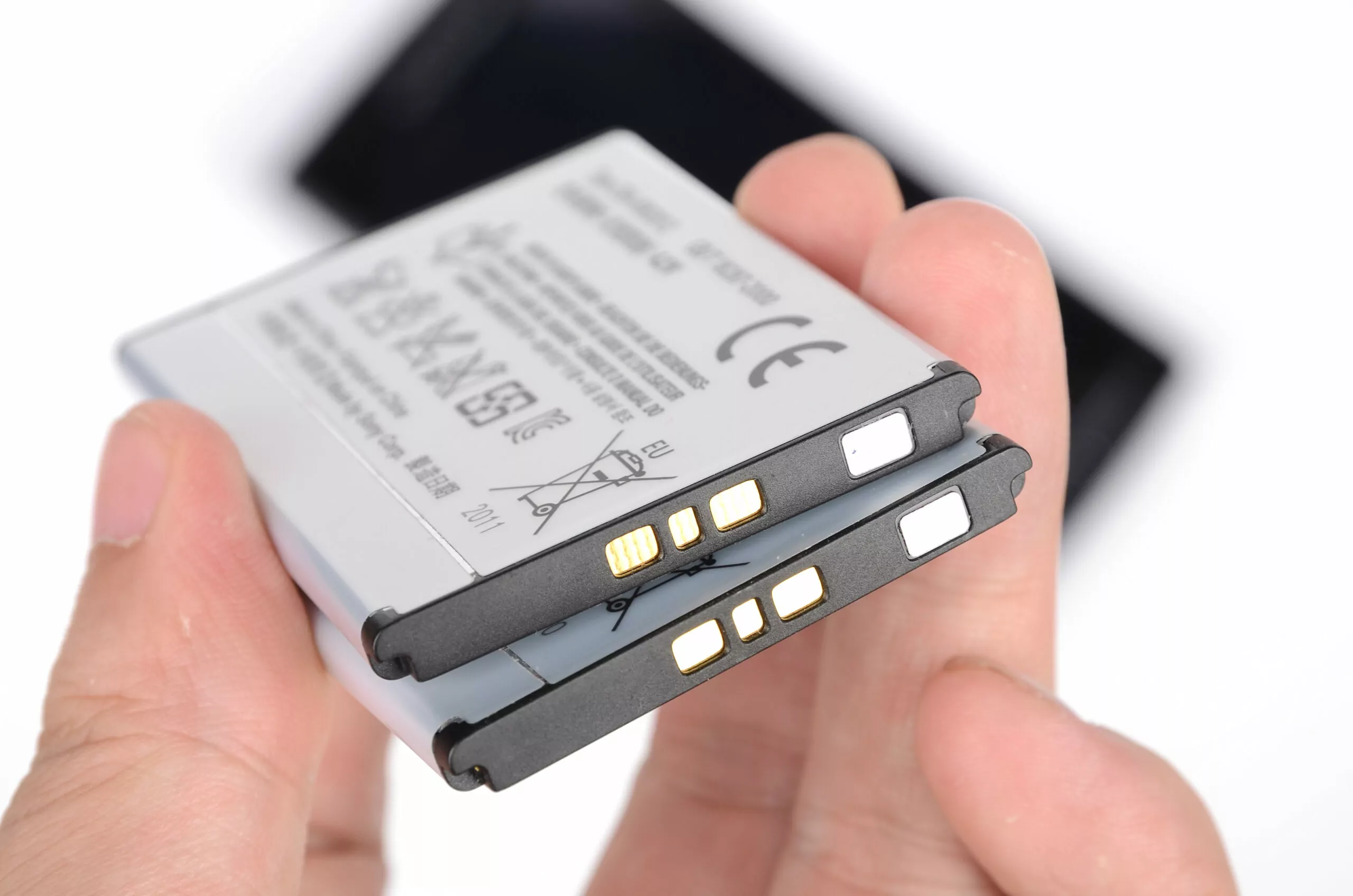
If we’re going to talk about safe temperatures for lithium-ion batteries, then it only makes sense to go through the basics of the batteries in the beginning.
What is a lithium-ion battery?
It’s a type of battery that uses a special type of design that is only possible when lithium-ions are the primary source of electrical charge.
With any battery, you have an anode and a cathode.
These are sides of the battery with opposite charges.
When the battery is powering something, electrons can flow from the anode to the cathode, powering the circuit.
What makes lithium-ion batteries special is that they create the lithium-ions, stripping electrons away.
Those ions then pass through a membrane between the anode and cathode.
This builds up a positive charge by the cathode, and that attracts the free electrons from the anode.
All batteries use anodes and cathodes, but lithium-ion batteries are special because the lithium itself is able to move through that membrane easily.
This is why these batteries charge faster than most other kinds of batteries, and it’s why lithium-ion batteries can recharge so many times.
The lithium is the key.
A Quick Note on Battery Cells
In order to explain certain aspects of temperature effects on batteries, I’m going to have to discuss battery cells, so let’s take a moment to learn about that.
A cell is more or less a battery.
You have an anode, a cathode, and something in the middle that can be ionized.
That makes up a cell.
You can then put multiple battery cells together.
When you do this, you increase the total amount of electricity that the battery can hold.
It’s kind of like a six pack of drinks.
Each drink is in its own can, but if you string six of them together, you can carry more liquid at once.
So, a battery can be made up of a single cell, or it can be made from multiple cells.
When it comes to phone and laptop batteries, they typically have multiple cells.
Each cell is effectively its own battery that is designed to work in concert with the rest.
But, if you damage some of the cells, you can make it so that the battery is no longer able to power your device.
Are Lithium-Ion Batteries Different in Phones and Laptops?
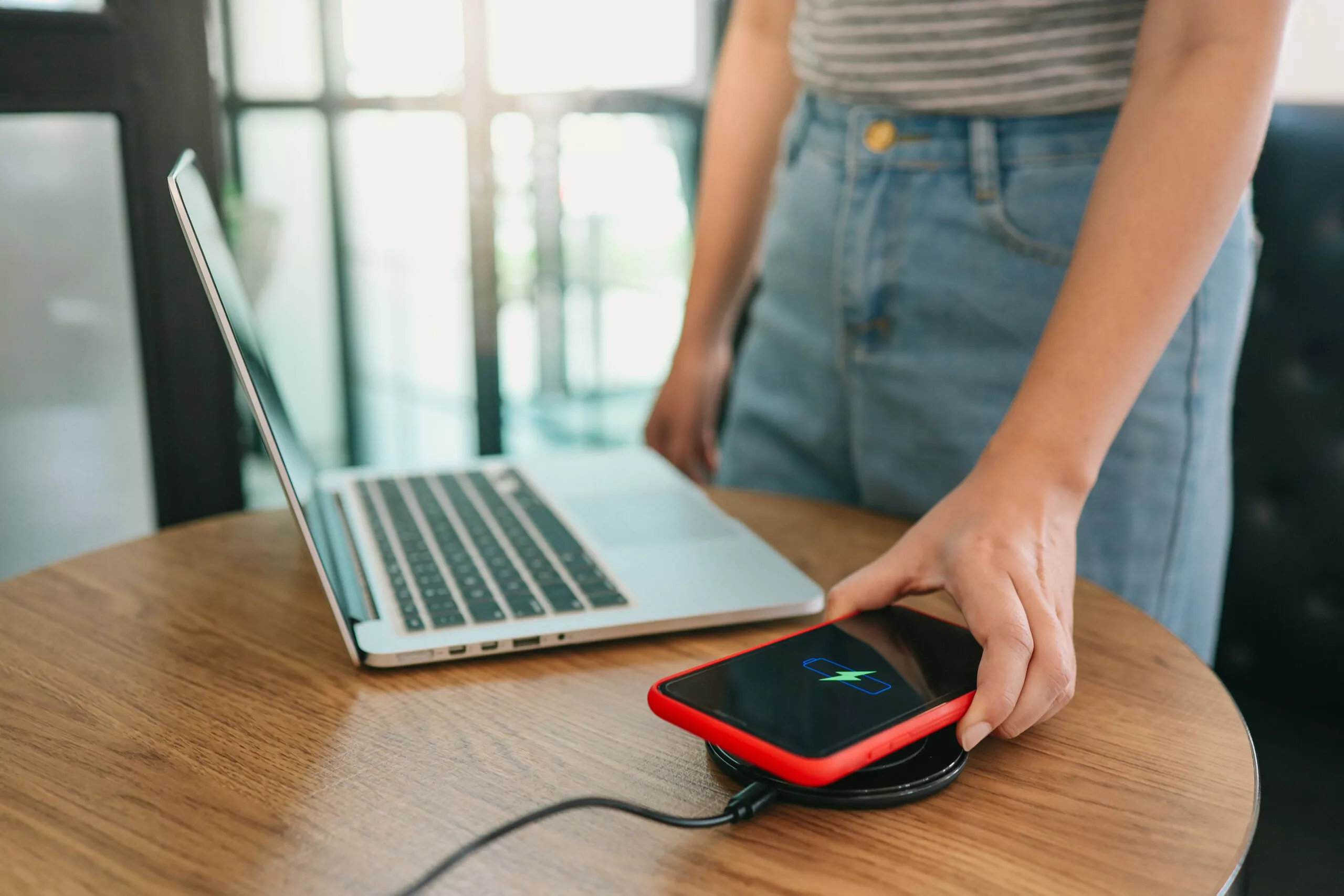
The most common places where you’re going to see lithium-ion batteries are powering phones and laptops.
Plenty of other devices also use this technology, but I’m really going to focus on these two specific cases, and there are a few reasons for that.
Primarily, by showing these two cases, you can see how lithium-ion battery usage and best practices change according to the device in question.
With that in mind, let’s talk about something important to this overall discussion.
Are the batteries different in phones as compared to laptops?
Yes and no.
In terms of the chemistry and raw functionality, lithium-ion batteries are the same no matter what device they might charge.
You’re looking at the same science powering both phones and laptops.
Despite that, there are design differences, and those impact things like safe temperatures.
The most important thing I can point out today is that laptop batteries are usually quite a bit bigger than phone batteries.
Even though they’re using the same lithium-ion technology, the laptop batteries tend to hold significantly more cells, and this matters.
Laptop batteries can store significantly more energy than phone batteries (in the vast majority of cases).
This means that it’s harder to discharge a laptop battery.
It also means that laptop batteries are capable of producing more heat, and this is really the crux of the differences between the two.
Because laptop batteries have more cells (and because they’re designed to push out more total electricity), they have a higher electrical resistance.
We can skip the physics lesson and simplify everything to one idea.
Electrical resistance is how batteries (and electrical devices) make heat.
In other words, a higher electrical resistance leads to the generation of more heat.
Since we’re talking about temperatures today, this will be an important fact that comes up again and again.
What Are Safe Temperatures for Lithium-Ion Batteries? (3 Scenarios)

Now that we’ve covered a ton of background information, let’s talk about temperatures.
When it comes to safe temperatures for lithium-ion batteries, there are actually three categories: storage temperatures, operating temperatures, and internal temperatures.
The first two refer to the ambient temperature when storing or using the battery.
In other words, that’s the air temperature around the device.
The internal temperature is something you would only be able to measure with a special sensor within your device.
I’ll cover all three types of temperatures.
First, I want to talk about storage.
We all have devices that sit around at times, so let’s think about what temperatures are safe for lithium-ion batteries when they aren’t in use.
#1 Safe Storing Temperatures
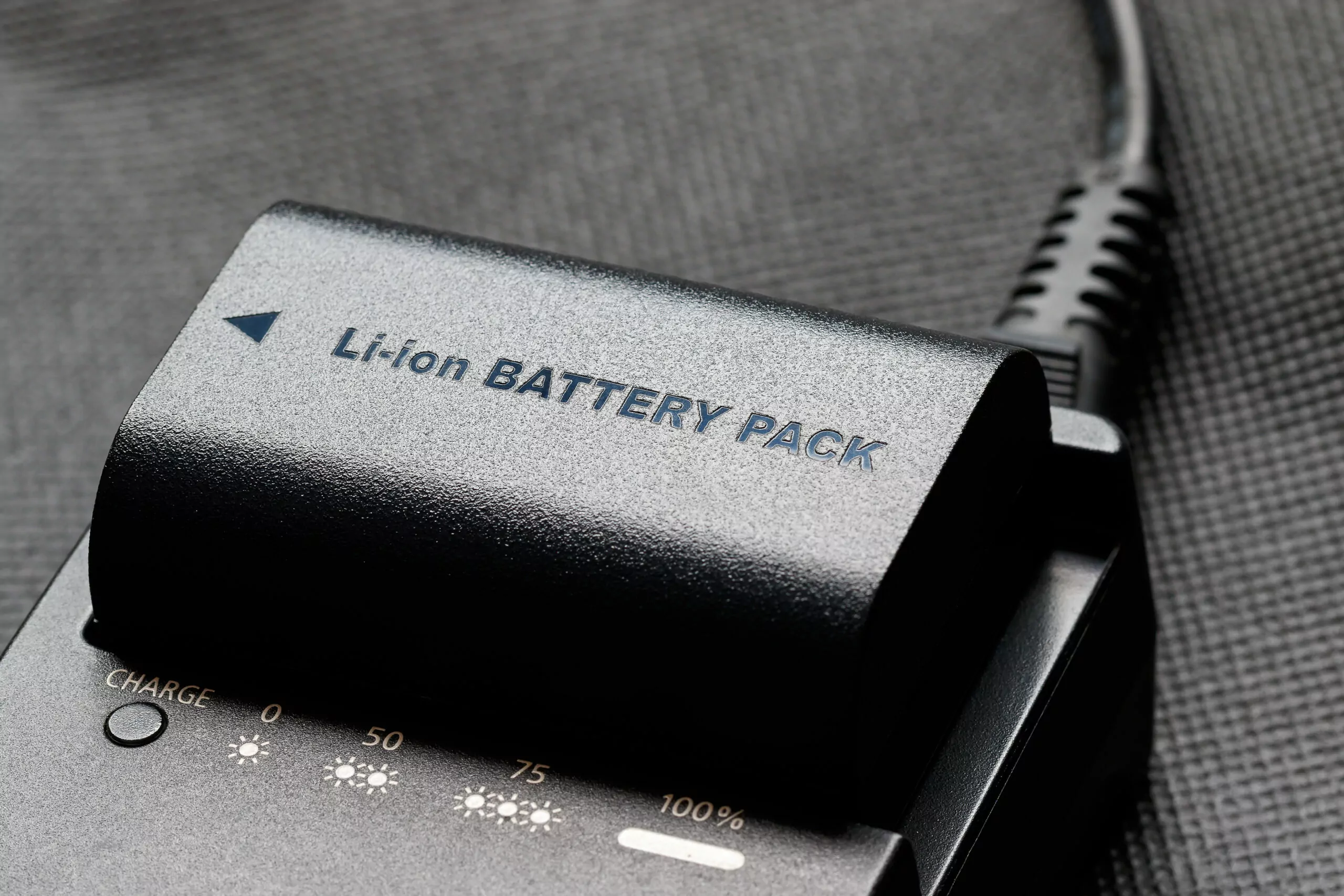
First up is storing temperatures.
What ambient temperatures are safe for a lithium-ion battery that is just sitting around?
At the extreme ends of the safe range, you can leave a lithium-ion battery in a room that is just above freezing.
If the storage temperature is above 32℉ (0℃), then damage to the lithium-ion battery will be minimal.
This concept is actually a little more complicated than that, but I’ll explain that more in the following sections.
On the high end of the spectrum, you want your storage temperatures to be below 104℉ (40℃).
Any higher than this will cause the batteries to sustain chemical damage.
It’s not good.
Still, those are the extremes.
It turns out that there’s a perfect storage temperature for lithium-ion batteries, and that temperature is 59℉ (15℃).
What Happens at Cold Temperatures
We want the batteries to sit around in temperatures above freezing.
That sounds great, but why?
Well, when a lithium-ion battery gets too cold, it struggles to hold its charge.
Storing at low temperatures will cause the battery to discharge faster than normal.
That alone doesn’t matter too much, but there are two complications that can turn this into a problem.
The first applies to lithium-ion batteries that completely lose all of their charge.
Typically, when you drain your phone down to 0%, the battery actually still has a fair amount of charge in it.
The software is telling you the battery is drained and turning off the phone to prevent the battery from being truly depleted.
If a lithium-ion battery hits a real 0% charge, then it won’t be able to recharge.
Completely draining a lithium-ion cell damages the cell.
There are repair procedures that can undo this, but without those procedures, a fully drained lithium-ion battery never charges again.
So, cold temperatures make it easier for a phone to enter this state.
The second problem is related to something called cell reversal.
I’ll go into this in more detail in a later section, but here’s the important part for storage.
When you store a device with a lithium-ion battery, the battery is able to discharge very small amounts of electricity into the device.
So, your phone very slowly drains the battery even though it’s off.
In cold temperatures, even this slow drain can increase the risk of cell reversal, which seriously harms the battery.
The Problems With Hot Storage
As for hot storage, the mechanics of the problems are different, but the end results are the same.
If you store a battery in a place that gets too hot, it harms the battery, and you lose total charge.
This is a good time to talk about temperature gradients.
I said that the maximum safe temperature is 104℉, but that’s not really the best way to put it.
It’s more accurate to say that above 104℉, cell depletion happens very rapidly.
It’s really like this.
If you store a battery in an attic that is 104℉ all the time (we’re trying to keep the example simple), and you leave it there for a whole year, then at the end of that year, it will lose 15% of its total capacity.
That capacity is gone forever.
Similarly, if you store it at 32℉ for a full year, it will lose 15% of that capacity.
If you store above or below these temperatures can lose up to 35% of their capacity in just a few months.
There’s a rapid increase in losses.
Meanwhile, if you store the battery at the perfect 59℉ for a year, you only lose 4% of your capacity.
For comparison, a battery stored at 72℉ will lose slightly more than 5% capacity, so there’s plenty of wiggle room here.
So, this whole thing exists on a spectrum, and the closer you can get to 59℉ the better.
As for why hot temperatures hurt the batteries, it’s a matter of thermodynamics.
When the battery is hotter, the particles inside of it have more energy and collide with each other more frequently and more violently.
Those collisions can lead to chemical changes that damage the battery.
Phones vs. Laptops
There’s one other thing we need to cover, and that’s the differences between phones and laptops when it comes to battery storage.
Remember how laptop batteries hold more charge and have more resistance as compared to phones?
Well, it means that laptop batteries are a little more resilient in the face of storage temperatures.
It’s still best to keep laptops stored at normal room temperatures, but a laptop battery will handle temperatures closer to the extremes just a little better than a phone battery.
#2 Safe Operating Temperatures
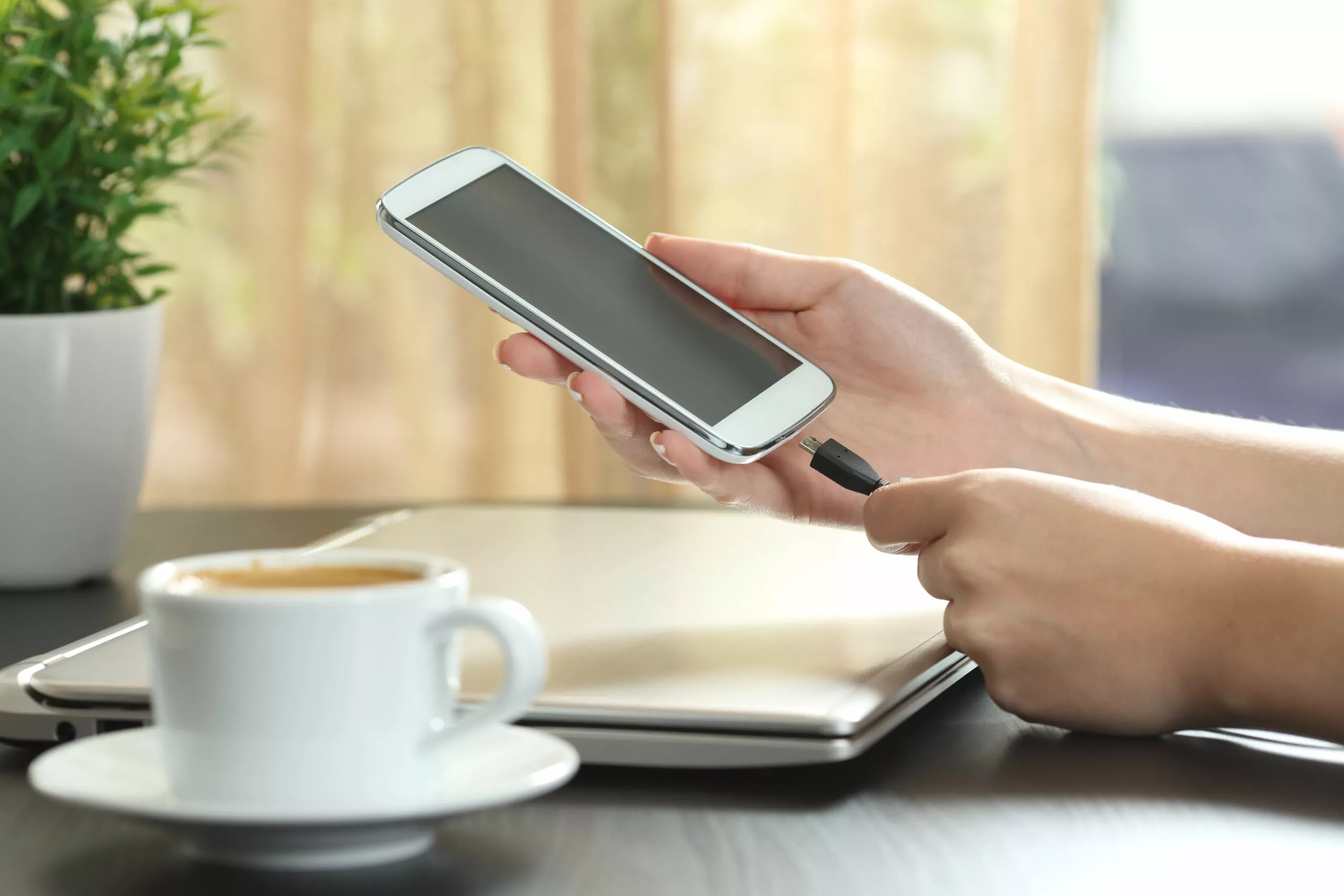
That covers storage temperatures rather thoroughly.
Now, we can get into operating temperatures.
If you’re actually using your device, what ambient temperatures are ok for it?
Can you use lithium-ion devices in a snowstorm?
Are they ok throughout the summer?
These are interesting questions, and when it comes to safe operating temperatures, the thing that matters most is actually the temperature for charging.
In terms of simply using your device, the only temperature that will matter is the battery’s internal temperature, and I’ll cover that in another section.
For ambient temperatures, you really care about charging.
When you charge a battery, heat is created.
As we covered before, electrical devices have resistance, and that resistance generates heat.
This is most prominent during charging.
Since charging already creates heat, if you do this in a hot environment, then the compounding sources of heat can prove too much and damage the battery.
Because of this, you never want to charge a lithium-ion battery when it is hotter than 113℉.
If you do, you risk overheating the battery and damaging the system.
As long as it’s cooler than that, you can safely charge your battery.
Low Operating Temperatures
That said, it is possible for things to be too cold.
Ideally, you don’t want to charge a battery when it is cooler than 32℉.
The reason for this is similar to the problem with storing a battery in cold areas.
When the battery gets cold, you can get cell reversal.
I glossed over that before, but let’s get into it now.
At its core, cell reversal is a bit of a complicated phenomenon.
To keep this in simple terms, when a lithium-ion battery gets cold enough, that can impact the distribution of charges through the battery, and it can actually cause the voltage to reverse.
If you charge a battery when the cells are reversed like this, it kills the battery.
So, you want to avoid charging cold batteries because you can instantly fry them if they’re cold enough for cell reversal.
At below-freezing temperatures, it’s easy to run into this scenario.
#3 Safe Internal Temperatures

Last up is the internal temperature.
How hot or cold can the battery itself get while in use?
This is also called the safe discharge temperature range.
It’s the temperatures where you can pull charge out of the battery without causing damage, and it’s a wider range than the other temperatures we’ve discussed so far.
Generally speaking, it’s safe to use a battery with an internal temperature between -4℉ and 140℉.
At the cold end of the spectrum, it’s ok for the battery to discharge at these temperatures because the act of using the battery will heat it up pretty quickly.
So, you’re not going to have to worry about cell reversal (usually) at such internal temperatures.
As for heat, the batteries generate a lot of that while in use, so they’re engineered to withstand their own heat generation.
Basically, as long as you don’t use a lithium-ion battery when it’s extremely hot outside, the internal temperature won’t get above 140℉, and everything will be fine.

